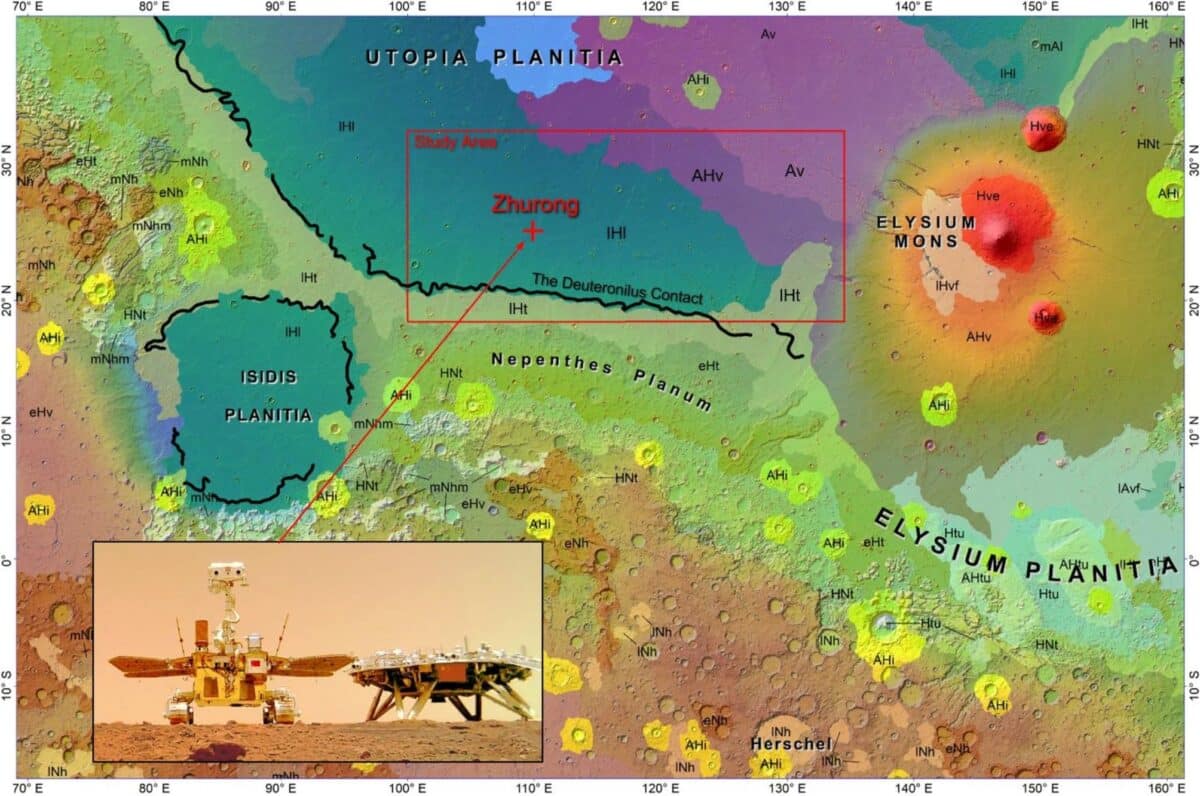12:09:59 pm 11/25/2024
Viewed: 3823
China’s Zhurong Rover Finds a “Hidden Ocean” Shoreline on Mars
The Chinese Mars rover Zhurong, part of the Tianwen-1 mission, has revealed what could be one of the most tantalizing pieces of evidence in the search for Mars’s watery past. Researchers from Hong Kong Polytechnic University suggest the rover’s data points to an ancient ocean shoreline in the Utopia Planitia region, providing a new perspective on the history of water on the Red Planet.
The Stunning Evidence From Zhurong’s Journey
Landing in May 2021, Zhurong is equipped with advanced tools designed for comprehensive exploration of the Martian surface and subsurface. The rover’s scientific instruments include:
Ground-penetrating radar (GPR): Can probe up to 100 meters beneath the surface, identifying subsurface layers and searching for water ice.
Multispectral camera: Analyzes the composition of rocks and soil, providing critical data on mineral content.
Navigation and topography cameras: Offer high-resolution imaging for mapping and geological studies.
Mars surface magnetic field detector: Investigates local magnetic field variations.
Mars meteorological measurement instrument: Monitors atmospheric conditions.
These tools enabled the rover to identify geological features such as crater-like pitted cones, sediment channels, and mud volcanoes—formations typically associated with ancient shoreline environments on Earth. Researchers estimate this ocean existed around 3.68 billion years ago and was heavily silt-laden, forming distinct sedimentary layers.
According to the research, the ocean likely froze over for tens of thousands of years before drying up nearly 260 million years later. This frozen landscape would have preserved coastal features, leaving behind the sedimentary layers observed by the rover.
For decades, scientists have debated whether Mars once hosted vast bodies of water. Zhurong’s findings strengthen the hypothesis that the planet’s northern lowlands were once covered by an ocean during the Hesperian period. If validated, this discovery would mark a significant milestone in understanding Mars’s climate and potential for sustaining life.
Skepticism and the Erosion Conundrum
Not all scientists are convinced. Critics, such as Pennsylvania State University’s Benjamin Cardenas, argue that erosion over billions of years would likely have erased such delicate features. However, the research team suggests asteroid impacts may have resurfaced and preserved portions of the shoreline, making them visible to Zhurong’s instruments.
No video exists.





Comments